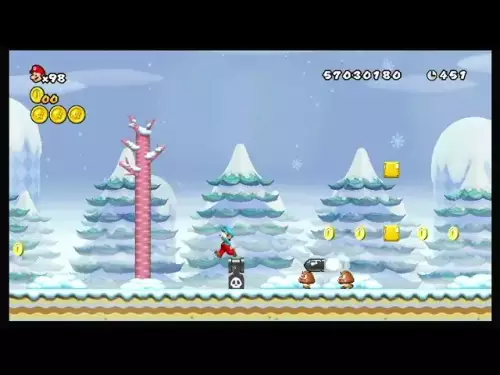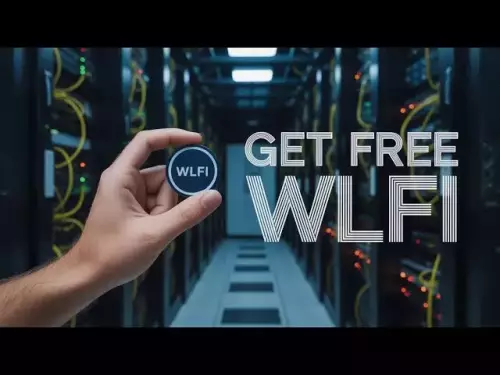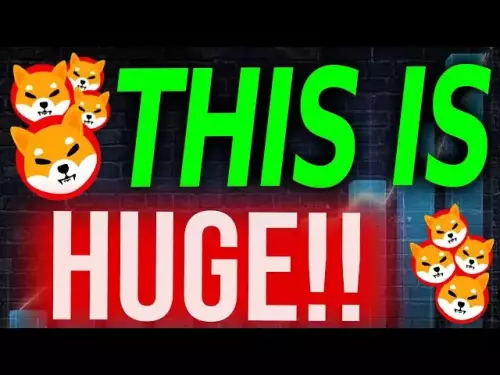 |
|
 |
|
 |
|
 |
|
 |
|
 |
|
 |
|
 |
|
 |
|
 |
|
 |
|
 |
|
 |
|
 |
|
 |
|
Cryptocurrency News Articles
World Liberty, TRON Ecosystem, and DeFi Governance: A Cautionary Tale
Sep 06, 2025 at 03:52 pm
Exploring the World Liberty Financial (WLFI) controversy and its implications for DeFi governance within the TRON ecosystem. Unpacking centralization risks and investor sentiment.

World Liberty, TRON Ecosystem, and DeFi Governance: A Cautionary Tale
The World Liberty Financial (WLFI) saga has thrown a spotlight on the complex relationship between decentralization, governance, and investor trust within the DeFi space. The freezing of Justin Sun's tokens sparked a global debate, highlighting the potential pitfalls when centralized control clashes with decentralized ideals. Let's dive into what this means for the TRON ecosystem and the future of DeFi governance.
The WLFI Freeze: Centralization vs. Decentralization
WLFI's decision to freeze Justin Sun's tokens exposed a major contradiction: a project marketed as decentralized operating with centralized control. Despite on-chain governance mechanisms, the ability to override tokenholder rights raised serious questions about the project's true nature. Was it truly decentralized, or just decentralized in name only?
Sun's investment of $75 million in WLFI added another layer of complexity. His public criticism of the freeze amplified scrutiny, forcing a closer look at the governance models of both WLFI and the broader TRON ecosystem. This incident serves as a reminder that investors need to carefully examine the governance structures of DeFi projects before committing capital.
Regulatory Scrutiny and Market Volatility
The WLFI freeze didn't just ruffle feathers within the crypto community; it also caught the attention of regulators. The U.S. Securities and Exchange Commission reportedly launched an investigation, aligning with a global trend of increased oversight on crypto projects. This regulatory scrutiny presents both a challenge and an opportunity for DeFi projects. Those that embrace transparent governance frameworks may gain a competitive edge, while those that don't risk facing stricter compliance requirements.
The market reaction to the WLFI freeze was swift and volatile. The token initially rebounded before plummeting to an all-time low, underscoring the risks of investing in projects with opaque governance structures. Derivatives trading linked to WLFI spiked, reflecting heightened speculative activity and investor uncertainty.
TRON's Ecosystem: A Double-Edged Sword
For the TRON ecosystem, the WLFI incident has had a mixed impact. On one hand, it has drawn attention to TRON's own governance model, which some critics argue remains too centralized. On the other hand, it has highlighted TRON's broader role in DeFi, potentially attracting investors seeking projects with more robust governance frameworks. The key for TRON is to balance innovation with accountability, demonstrating a commitment to decentralized principles while maintaining security and stability.
Lessons Learned and the Path Forward
The WLFI saga offers valuable lessons for DeFi projects and investors alike. Projects must prioritize transparency in governance, implementing mechanisms like multi-signature wallets and community votes for critical decisions. Investors, in turn, must scrutinize token economics and governance structures, recognizing that projects with concentrated ownership or opaque decision-making processes pose higher risks.
Conclusion: A Fork in the Road
The WLFI freeze has exposed vulnerabilities in DeFi governance models, highlighting the need for systemic reforms. As the crypto market matures, projects must prioritize transparent governance, equitable token distribution, and community-driven decision-making to rebuild trust and avoid the fate of WLFI.
So, what's the takeaway? The wild west of DeFi is still being tamed. It's a bumpy ride, but with a little more transparency and a lot more community involvement, we can build a more robust and trustworthy decentralized future. And hey, at least it's never boring!
Disclaimer:info@kdj.com
The information provided is not trading advice. kdj.com does not assume any responsibility for any investments made based on the information provided in this article. Cryptocurrencies are highly volatile and it is highly recommended that you invest with caution after thorough research!
If you believe that the content used on this website infringes your copyright, please contact us immediately (info@kdj.com) and we will delete it promptly.





























































